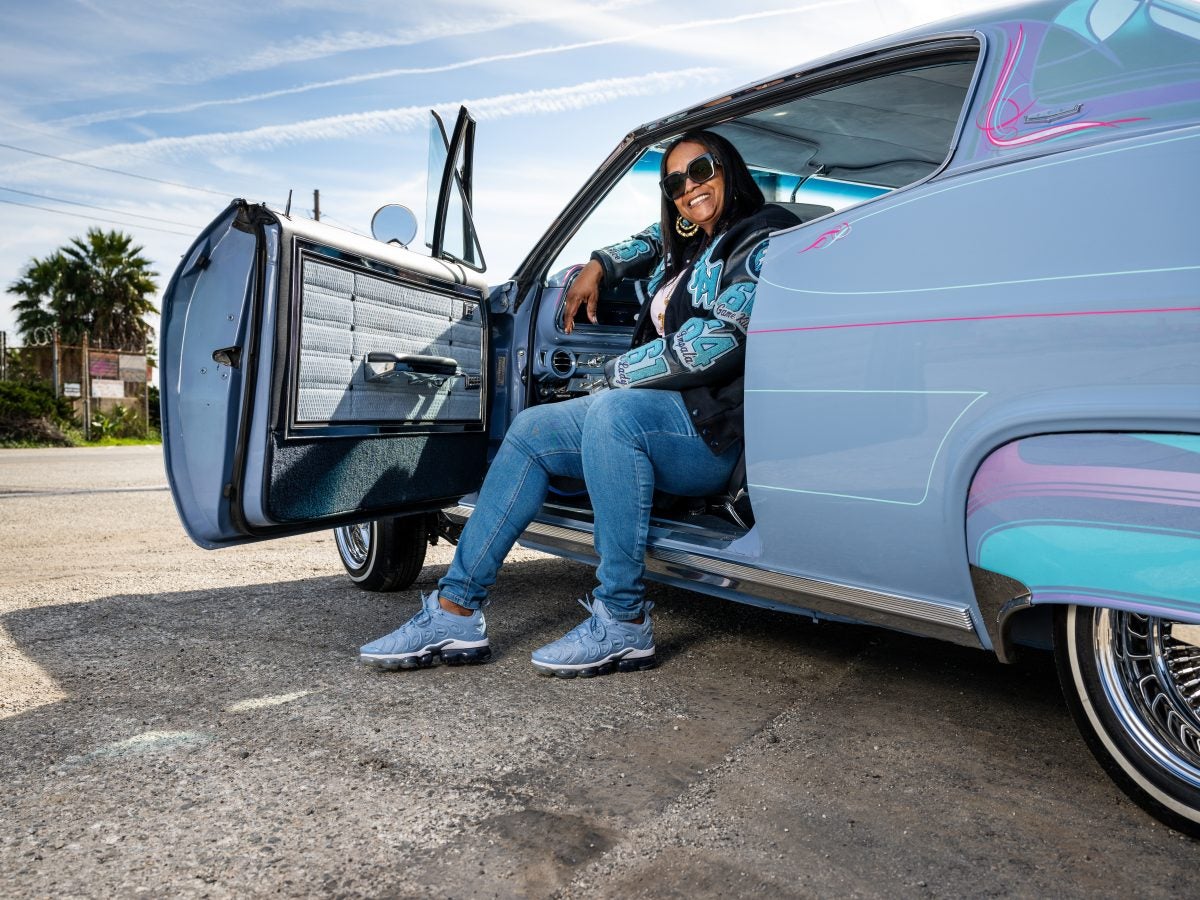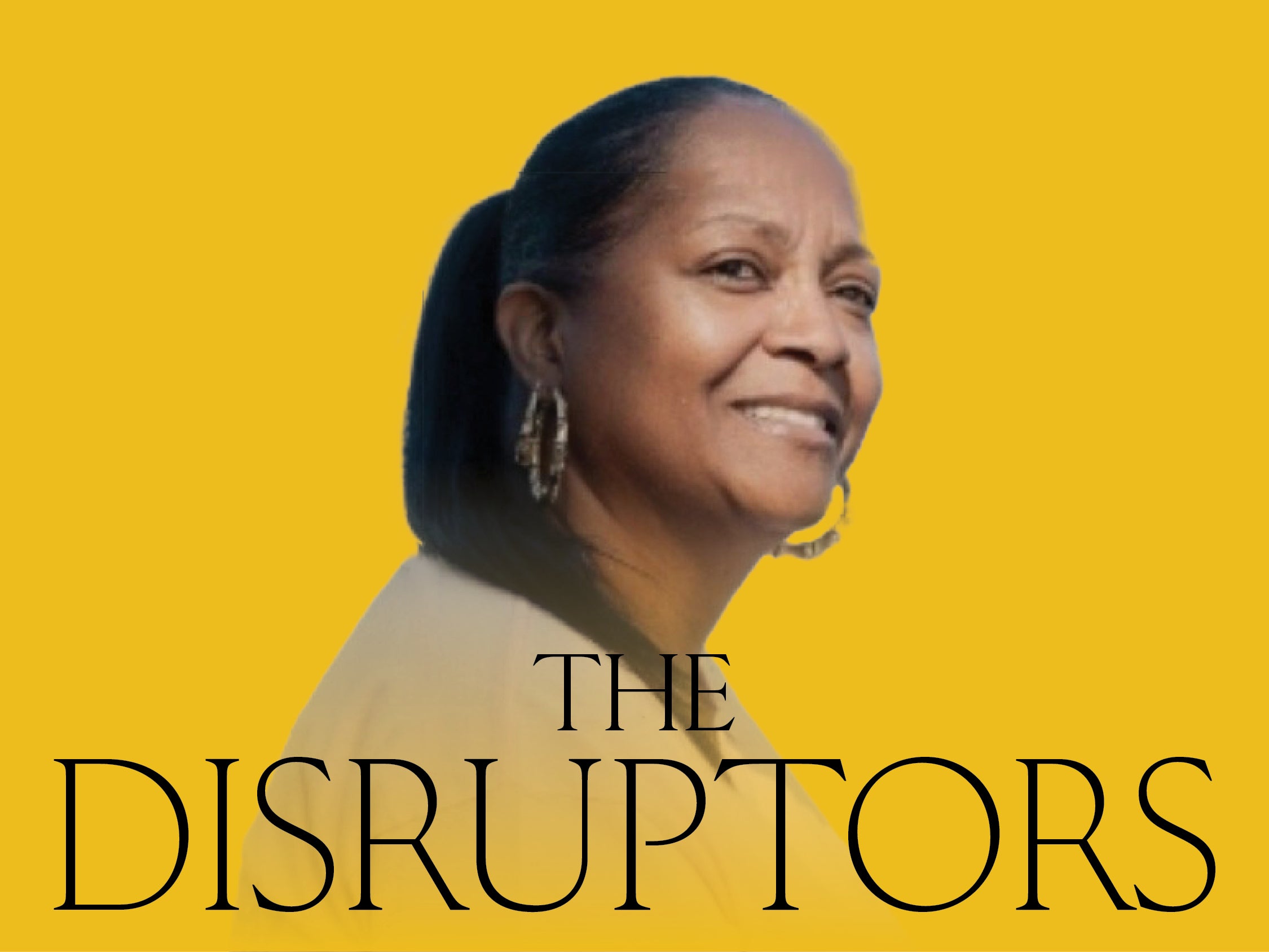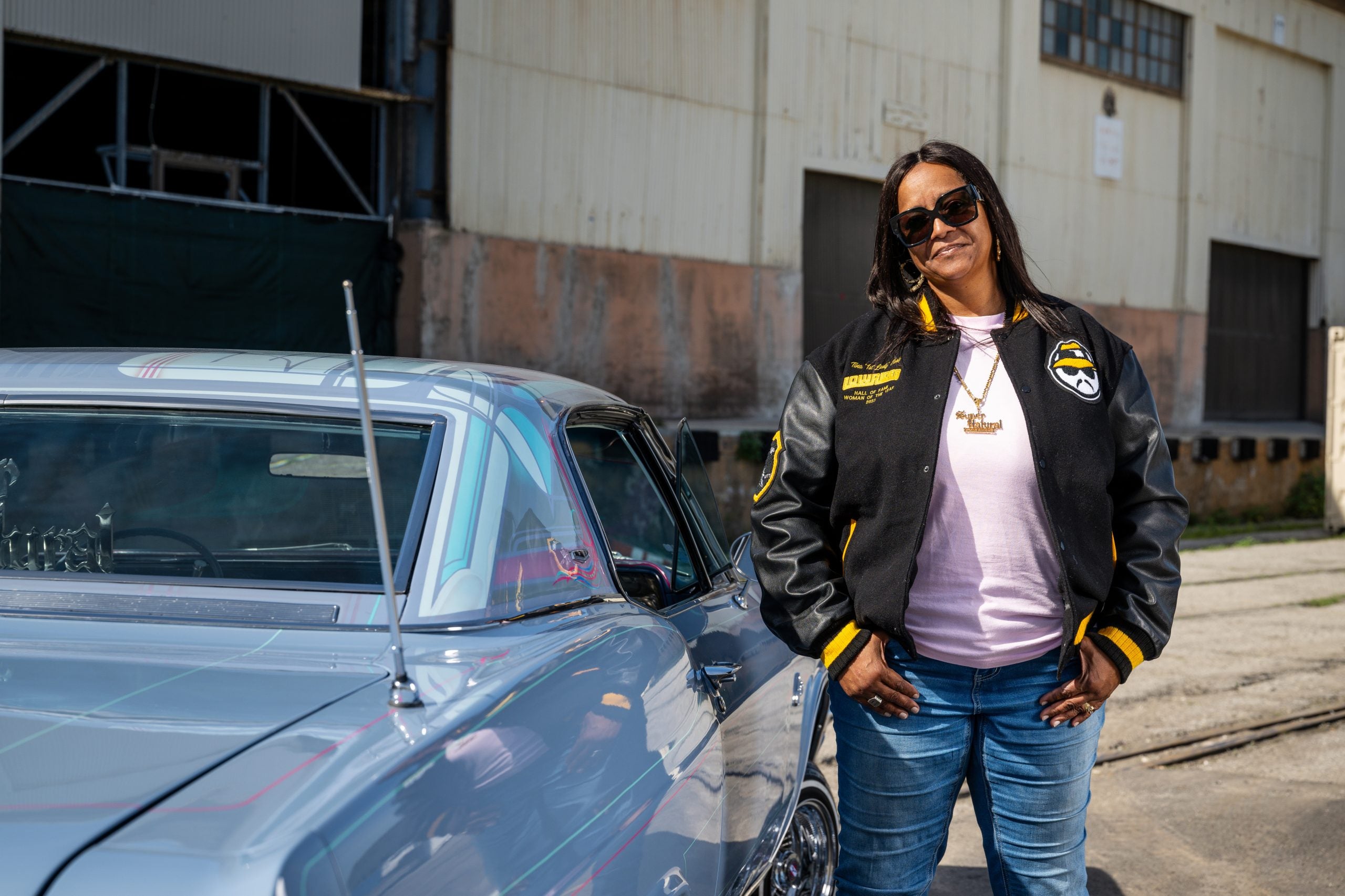
Lowriders, or customized vehicles that sit low to the ground, tend to catch the attention of passersby with jerks of their hydraulics, flashy colors and the tunes that blast from within. But what attracted lowrider (also a term for a person who drives these cars and takes part in clubs that meet around them) Tina Blankenship to them was the fact that they brought about a sense of calm for her. “That was like my peaceful time,” she tells ESSENCE of working on the vehicles. “I just really found a love for it. I think mostly because of the peace of mind.”
She devoted hours of silent concentration to learning their ins and outs. The South Los Angeles native methodically studied everything about the cars she would grow to love. She poured over their wires in the garage that belonged to her best friend’s father, learning all the ways to bring out their best.
Blankenship went from working on car audio systems to understanding every facet of lowriders’ strength and beauty. She could not master the vehicles without that insight. “It’s actually really hard to be a lowrider and not know anything about the cars because they do break a lot,” she says.
Twenty years later, she sits at the head of the Supernatural Lowriders. “I’m the first lady of my club,” she says proudly. Her customized baby blue 1966 Caprice Chevrolet, nicknamed Game Killa, is constantly recognized by pedestrians. It was featured in the hit film Straight Outta Compton. The attention adds to the joy for her. “I have so much fun driving the cars,” she says proudly. “And people love it.”

She became the first woman inducted into the National Lowrider Hall of Fame in 2012. Blankenship, for so many, represents a shift in lowrider culture where women have gone from passenger princesses to dominating drivers, and it doesn’t intimidate the men around them.
Blankenship’s husband is a hot rodder and they connect over their love of cars. “That’s a good bond for us,” she says. “A lot of couples sometimes don’t have anything in common. And with that, we actually have a whole lot in common. It’s a daily thing for us.”
There are some men in the community who are still shocked by the extent of her knowledge. “It’s funny,” she says. “The guys are like, ‘We can have a full conversation with you about cars because you know everything,’ and they say that’s rare.” But she says it’s more common than some realize, because the culture is full of women, including many newcomers from the younger generations whom she says she loves to watch “flourish.”
To honor these women, Blankenship included, Modelo partnered with MotorTrend Group to publish a special one-off issue of the beloved Lowrider Magazine featuring them and their cherished vehicles.
“This new era of lowriding, women are really excelling,” she says. Women are now being seen as capable of the providing the “craftmanship” necessary to maintain lowriders. “That is really the most important thing,” says Blankenship. “Not just being seen as we own lowriders, but that we can also build, that we have the artistic part of it and everything. If you just own a lowrider and you’re driving it, you know, basically, anybody can do that.”

She has forged a bond with lowrider Sandy Avila, a fellow leader in the culture, and considers her like a little sister. “I saw an interview that she did, and she said that I was the one that inspired her, and actually, since then, we’ve become really good friends,” she says with a smile.
Intergenerational relationships are crucial to maintaining the lowrider community. “If there’s not another generation after my generation or her generation, then it’s going to die,” she says.
Media depictions on past shows like Weeds have portrayed lowriders as people associated with gangs (and the beefs that come with them), but Blankenship dispels the stereotypes pushed by Hollywood. “I think we get a bad rap,” she states. The people seen cruising down Slauson and Van Nuys, she says, are regular working people with a passion for cars. Crews include construction site managers, engineers, and nurse practitioners who simply enjoy coming together over their shared interest and want to keep the culture going. It’s as simple as that.
“That’s what we look forward to for the weekend,” she says. “We’re like one big happy family, the Black and Brown.”